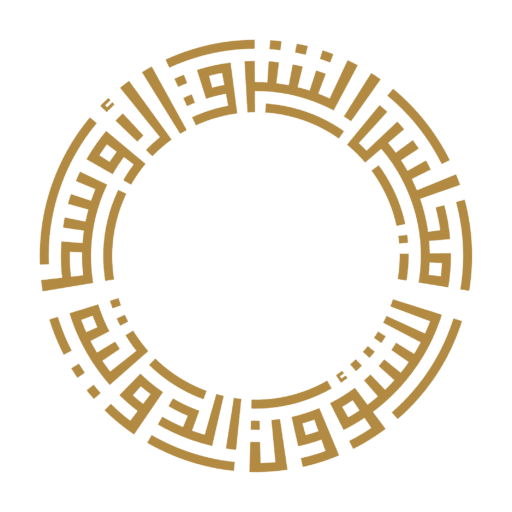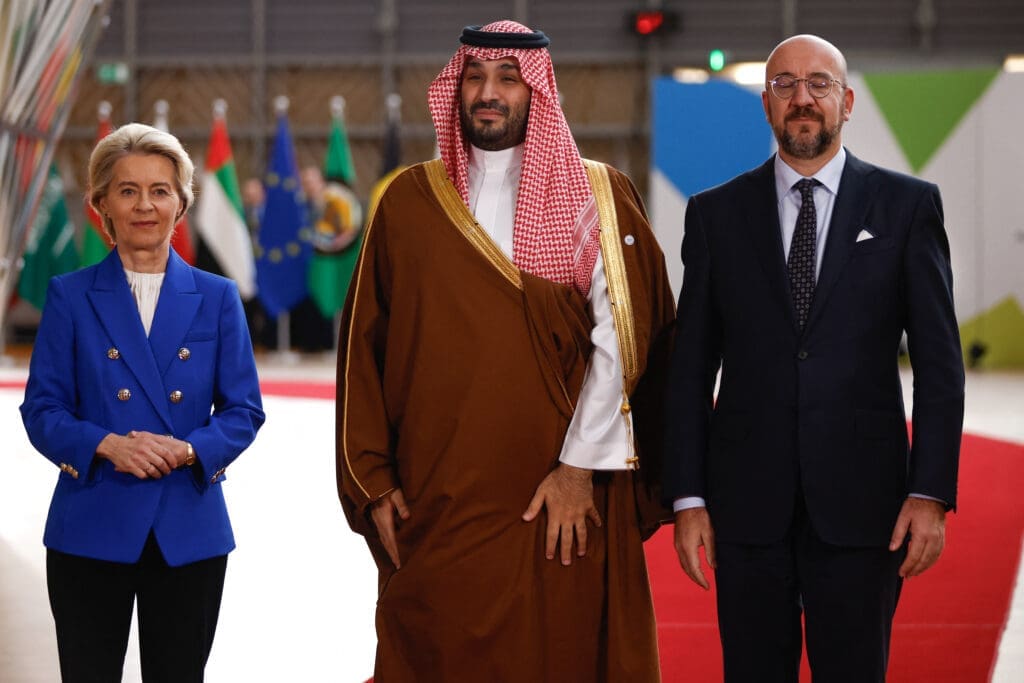The arrival of Donald Trump for a second term in the White House raises critical questions for the Middle East. Trump took office just days after a ceasefire deal aimed at ending a catastrophic 15-month war between Israel and Hamas, which had come close to dragging the region into an all-out conflagration. Now the president looks set to continue with his approach of “America First,” transactional diplomacy, and reducing U.S. involvement in multilateral institutions and treaties—or withdrawing from them altogether. Indeed, Trump’s focus on prioritizing American interests unilaterally above alliances could provide a greater incentive to close U.S. partners like the European Union and the Gulf Cooperation Council—particularly Saudi Arabia—to work together among themselves tackling issues of mutual concern.
Traditionally, the Gulf states have relied heavily on U.S. military and diplomatic support. However, the EU has been increasingly active in the Middle East, emphasizing multilateral diplomacy and regional stability. At the same time, GCC states have sought to rebalance their ties with other major powers, such as China and Russia, as well as pursuing their own initiatives to tackle regional issues.
One such initiative was the EU-GCC Summit held in Brussels in October, which emphasized a renewed commitment to reviving the Middle East peace process. While this builds on an initiative dating back two decades—the Saudi-backed Arab Peace Initiative—its relaunch reflects a more assertive Saudi Arabia under the leadership of Crown Prince Mohammed bin Salman. Riyadh is proactively shaping regional policy to establish itself as a leader in diplomacy and an architect of a new Middle Eastern order. By addressing questions such as the normalization of relations with Israel and comprehensive security guarantees, the initiative also addresses the geopolitical realities of a multipolar world, in which global actors such as China and the EU are increasingly relevant.
That summit and the Global Coalition for Implementing the Two-State Solution reflect greater determination on the part of Arab states themselves to address the region’s crises, including the Israeli-Palestinian issue, and mitigating risks of a prolonged regional conflict. As Saudi Arabia positions itself as a regional power broker on these subjects, its cooperation with the EU may signal a reordering of alliances in the Middle East, potentially reducing Gulf reliance on the U.S. as the dominant external power in the region.
Trump’s return to the White House adds complexity to the geopolitical calculus. During his first term, Trump pursued a foreign policy centered on bilateral relationships, often at the expense of traditional alliances and multilateral agreements. In the Middle East, this translated to a strong focus on arms deals with Saudi Arabia, the Abraham Accords normalization deals between Israel and Arab states, and an emphasis on greater economic cooperation.
However, Trump’s isolationist approach and his “America First” policy look set to create challenges with regional blocs and multilateral institutions. His withdrawal from the Iran nuclear deal in 2018 and his skepticism toward NATO reflect a broader global disengagement. So far, he has pulled the U.S. out of the World Health Organization and the Paris Climate Accord, frozen most U.S. aid abroad, and imposed tariffs on key American allies. If this approach continues in his second term, Saudi Arabia may perceive a diminishing U.S. role in the Middle East as an opportunity to assert its independence. Saudi-led peace efforts could be Riyadh’s way of stepping into the vacuum left by Washington’s retreat from global leadership.
At the same time, Trump’s transactional style might complicate U.S.-Saudi relations. While Washington and Riyadh share strategic interests, Trump could demand more direct dividends for American support, whether in the form of economic concessions or alignment with U.S. foreign policy priorities. If Riyadh perceives Washington’s demands as too rigid, it may turn to alternative partners to advance its agenda.
This could present the EU with an opportunity to play a greater role in regional diplomacy, in partnership with the GCC. The European bloc can potentially rise to the occasion and re-align with the multilateral aspects of the Arab Peace Initiative, especially with the recent divergent views after October 7. European nations have long advocated for a two-state solution to the Israeli-Palestinian conflict, have historically criticized the expansion of Israeli settlements in the West Bank, and have immense economic leverage over Israel. They have also expressed strong support for stabilizing Yemen and the region at large. Moreover, Europe’s interest in reducing its energy dependence on external actors—particularly Russia—positions it as a natural partner for Gulf states seeking to expand their economic and diplomatic influence.
This evolving EU-GCC relationship could sideline the U.S. role in specific discussions via multilateral channels, potentially diminishing Washington’s influence in the Middle East and binding the EU’s obligations towards the region. The EU’s response to the Arab-led peace initiative could signal a substantive commitment and an evolving role in Middle Eastern diplomacy, allowing Europe to position itself as a counterbalance to U.S. policies.
Given sufficient support, the initiative could have far-reaching implications for Middle Eastern stability and global geopolitics. By prioritizing a resolution to the Israeli-Palestinian conflict and proposing a robust regional security framework, Saudi Arabia aims to address some of the root causes of instability in the region. If successful, this could not only strengthen Riyadh’s position as a regional power but also provide a blueprint for peace with other nations.
However, the path forward is not without challenges. Saudi Arabia’s assertive approach may provoke resistance from Iran, whose regional influence is threatened in the wake of a string of blows since October 7, 2023. Similarly, achieving consensus among GCC states with divergent priorities could prove difficult. The initiative’s success will depend on Riyadh’s ability to balance these dynamics while securing buy-in from global powers.
The EU, moreover, is not without its divisions. Members of the bloc have shown conflicting priorities on issues including migration and refugee policy, defense and security, and responses to the Russia-Ukraine war.
Regional Assertiveness
The Saudi-led diplomatic campaign advocates for regional stability as a priority that requires initiative, leadership and execution by Arab governments. This will require serious thought, including on the viability of the two-state solution to the Israeli-Palestinian conflict, with East Jerusalem as the capital of a future Palestinian state, and political settlements to address broader crises for regional stability, such as the situation in Lebanon.
With Trump’s return to the White House, the EU-GCC relationship could face both opportunities and challenges. While the U.S. has traditionally been the dominant power in the region, the GCC states have signaled an increased willingness to engage with alternative partners. This could not only challenge the presence of the U.S. but also see other players such as China and Russia play a more substantive role.
Ultimately, the Arab-led peace framework represents an ambitious vision for the Middle East and reflects Riyadh’s interest in leading, rather than following. For the EU, it presents an opportunity to deepen its involvement in Middle Eastern diplomacy, advancing its goals of energy security and regional stability. The bloc could position itself to fill the void that the U.S. may leave behind in terms of guarantees for capacity building, peace negotiations and other economic and strategic needs. For Washington, the challenge lies in adapting to a more assertive Saudi Arabia and other regional powers reaching for alliances and cooperation elsewhere. Ultimately, the success of these efforts will depend on the willingness of all parties to cooperate in shaping a new chapter for the region—one in which no single power holds all the cards.


